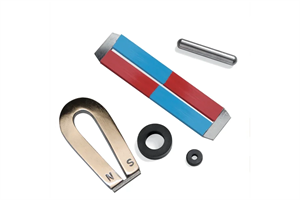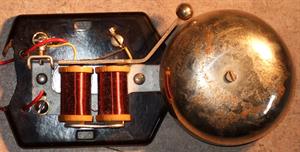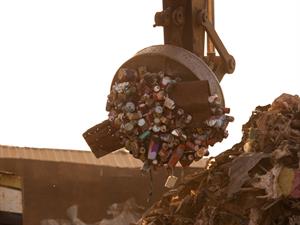
PUMPA - SMART LEARNING
எங்கள் ஆசிரியர்களுடன் 1-ஆன்-1 ஆலோசனை நேரத்தைப் பெறுங்கள். டாப்பர் ஆவதற்கு நாங்கள் பயிற்சி அளிப்போம்
Book Free DemoDifferent kinds of magnets were produced from magnetic materials in different shapes by magnetisation. An artificial magnet can be made
- by electrically magnetising iron or steel alloys.
- by striking a magnetic material with some other artificial magnets or magnetite.

Artificial magnets
These artificial or man-made magnets are classified as permanent or temporary magnets based on their ability to maintain magnetic properties.
Temporary Magnets:
These temporary magnets are generally made of soft iron. So, when exposed to an external magnetic field generated by a current-carrying coil of wire, the soft iron acts like a magnet. When the current in the circuit is turned off, it loses its magnetic properties.
Electromagnets:
When the current flows through the circuit, the coil behaves like a magnet. At the same time, the coil loses its magnetism when the current is turned off. These types of coils are known as electromagnets. It is a temporary magnet in which an electric current produces a magnetic field.
A small experiment to show the process of electromagnetism requires an iron nail, an insulated wire, few pins, and a cell.

Electromagnet
- Take an iron nail and a flexible plastic wire (or any insulated wire) of a certain length.
- Wound the wire tightly around the iron nail like a coil.
- Now, connect the ends of the wire to the cell and place the pins near the end of the nail.
- When the current is switched on, the pins clung to the tip of the nail.
- But when the current is turned off, the pins do not stick to the tip of the nail.
This phenomena shows that the flow of current enables the magnetic effect on the iron nail.
Example:
The electric bell works on the electric current passed through the coil, which makes the bell ring.

Electric bell
In a junkyard, a crane attached to an electromagnet is used to carry heavy metal loads. It also helps to separate magnetic materials from the junk.

Junkyard crane
Reference:
https://upload.wikimedia.org/wikipedia/commons/c/c1/DoorBell_001.jpg